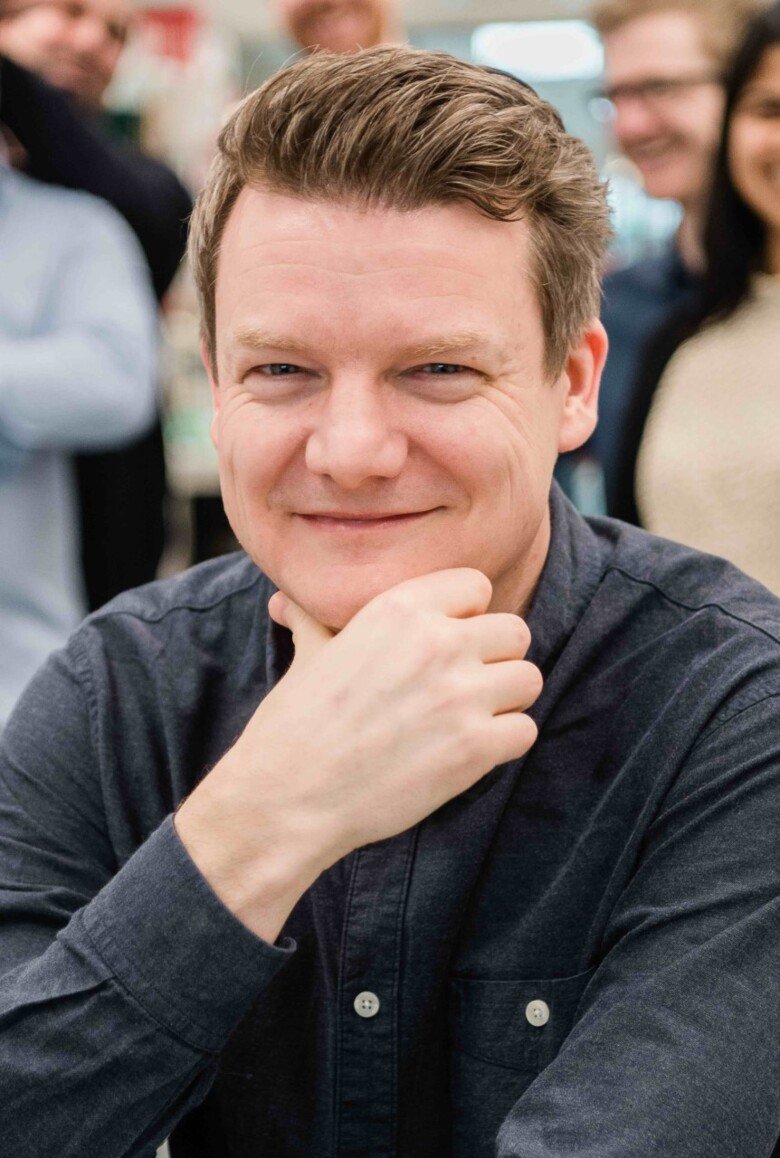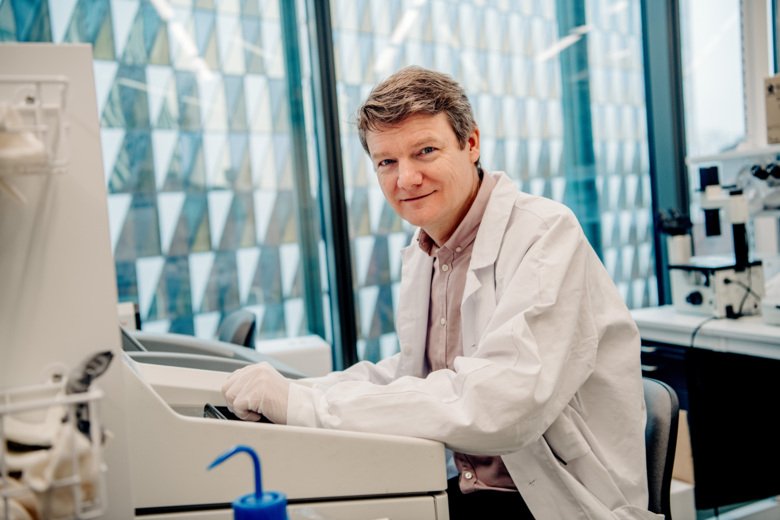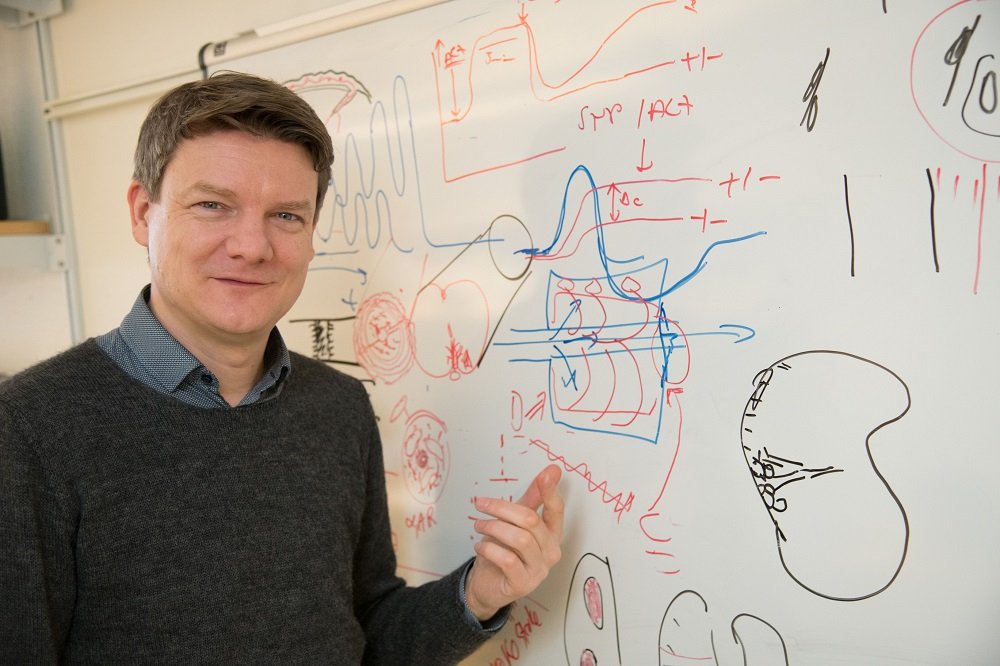Christian Göritz
Christian Göritz studied Biochemistry in Berlin, Germany. He performed his PhD studies in Strasbourg, France, in a joint Max Planck/CNRS research environment. As a member of the European Doctoral College, he received his PhD in Neuroscience after a joint defense at the Free University in Berlin and the University Louis Pasteur in Strasbourg. For his postdoctoral training, he joined the lab of Jonas Frisén, and established his own research group at CMB at Karolinska Institutet.

Christian Göritz and his lab focus on the mechanisms that mediate scarring and repair of the central nervous system. Göritz et al. discovered a new type of cells that are associated with small blood vessels, named type A pericytes. These cells are the main source of stromal scar tissue, which constitutes the long-term persistent scar core following spinal cord injury.
By comparing several different models of injury and disease, the Göritz team is intending to uncover common mechanisms of scarring and fibrosis with the goal to identify new targets for the treatment of central nervous system lesions in humans. In parallel, endogenous cell replacement mechanisms are investigated.
Through the Ming Wai Lau Center collaborative research environment, the Göritz group aims to develop and test strategies that could be utilized to enhance tissue repair, with the long-term goal to facilitate repair in humans.
Selected Publications
Dorst, M. C., Díaz-Moreno, M., Dias, D. O., Guimarães, E. L., Holl, D., Kalkitsas, J., Silberberg, G., & Göritz, C. (2021). Astrocyte-derived neurons provide excitatory input to the adult striatal circuitry. Proceedings of the National Academy of Sciences, 118(33), e2104119118.
https://doi.org/10.1073/pnas.2104119118
Dias, D. O., & Göritz, C. (2018). Fibrotic scarring following lesions to the central nervous system. Matrix Biology, 68–69, 561–570. https://doi.org/10.1016/j.matbio.2018.02.009
Dias, D. O., Kim, H., Holl, D., Werne Solnestam, B., Lundeberg, J., Carlén, M., Göritz, C., & Frisén, J. (2018). Reducing Pericyte-Derived Scarring Promotes Recovery after Spinal Cord Injury. Cell, 173(1), 153-165.e22.
https://doi.org/10.1016/j.cell.2018.02.004
Reichenbach, B., Classon, J., Aida, T., Tanaka, K., Genander, M., & Göritz, C. (2018). Glutamate transporter Slc1a3 mediates inter‐niche stem cell activation during skin growth. The EMBO Journal, 37(9).
https://doi.org/10.15252/embj.201798280
Magnusson, J. P., Goritz, C., Tatarishvili, J., Dias, D. O., Smith, E. M. K., Lindvall, O., Kokaia, Z., & Frisen, J. (2014). A latent neurogenic program in astrocytes regulated by Notch signaling in the mouse. Science, 346(6206), 237–241.
https://doi.org/10.1126/science.346.6206.237
Sabelstrom, H., Stenudd, M., Reu, P., Dias, D. O., Elfineh, M., Zdunek, S., Damberg, P., Goritz, C., & Frisen, J. (2013). Resident Neural Stem Cells Restrict Tissue Damage and Neuronal Loss After Spinal Cord Injury in Mice. Science, 342(6158), 637–640.
https://doi.org/10.1126/science.1242576
Goritz, C., Dias, D. O., Tomilin, N., Barbacid, M., Shupliakov, O., & Frisen, J. (2011). A Pericyte Origin of Spinal Cord Scar Tissue. Science, 333(6039), 238–242. https://doi.org/10.1126/science.1203165
 Photo: Ulf Sirborn
Photo: Ulf SirbornChristian Göritz’s new publication in Nature Communications
Regeneration of the central nervous system (CNS) in adult mammals is limited by scar tissue, contributing to the long-lasting functional deficits observed after injury. In their recent publication, Christian Göritz and co-workers show that fibrotic scar tissue forms after different kind of lesions in spinal cord and brain in mice and humans. The authors compared 10 different lesion models in mice and 4 human CNS pathologies and found that in all cases, in which fibrotic tissue is formed, a discrete subset of perivascular cells (called type A pericytes) is the main source. The Lab suggested that type A pericyte-derived fibrosis could be explored as therapeutic target to improve recovery after CNS lesions.
 Photo: Erik Cronberg
Photo: Erik CronbergChristian Göritz's new publication in PNAS
The Göritz Lab has shown that induced adult neurogenesis by striatal astrocytes leads to the generation of glutamatergic neurons that functionally integrate into the adult striatal circuitry. The integration of glutamatergic neurons provides a local source of excitation to the striatum that could potentially compensate for reduced excitatory input due to aging or disease.
 Photo: Ulf Sirborn
Photo: Ulf SirbornChristian Göritz has a new publication in Cell
“Our findings give an important explanation as to why functional recovery is so limited following injury to the central nervous system” says Lau Fellow Christian Göritz.
